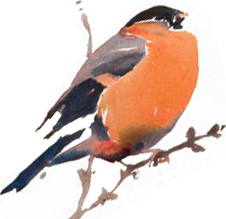The Woodcock is one of our most enigmatic waders. Our only wader that nests in woodland, Scotland’s breeding Woodcock are joined each winter by birds from as far afield as Russia. For many birders, Woodcock are seen when flushed from the woodland floor just in front of you. They have a habit of erupting from the leaf litter and darting off. Their camouflage is sublime, and when they’re on the ground they’re exceptionally difficult to see. One of the best times to experience these birds is on a still, calm spring evening when males fly low over the canopy on ‘roding’ flights. This was always assumed to be a territorial display but new research suggests it’s more like an aerial form of lekking-type behaviour with males showing off to females watching from the ground. Click here to hear the call of a roding Woodcock, and here to see a YouTube video of a roding display.
Sadly, Woodcock populations appear to be in decline. BTO Breeding Bird Atlas data revealed that Woodcock breeding distribution had declined by 56% between 1970 and 2010, resulting in the species being added to the ‘Red List’. The British population are centred in northern England and Scotland. BTO, in partnership with the Game and Wildlife Conservation Trust (GWCT) established the first national survey of Woodcock back in 2003. The survey was repeated in 2013 and this allowed us to make a new population estimate and see what had changed since 2003. The alarming answer was a 29% decrease in just ten years.

We are planning to repeat the survey in 2023 and we really need your help! BTO and GWCT are especially keen to increase coverage in Scotland so please consider taking part.
The survey involves four evenly spaced evening visits (including a recce in April) between 1 May and 30 June. Each visit consists of a 75-minute observation period to count the number of roding passes (seen or heard) from a fixed count point located within (or up to 400m outside) the 1km square. Although any zero counts might seem disheartening, they do provide a valuable measure of change, which we are really keen to capture. It all makes for a pretty nice way to spend an early summer’s evening!
The map below shows the distribution of squares - 242 in total - around Scotland. Around half are yet to be allocated! Why not get online and see if there’s a square near you? If you live in the southwest of Scotland and can help, then we’d be particularly grateful, as there is a big gap in coverage.

So go on, follow the link below and get involved. It’ll be a nice simple survey to take part in and will add valuable data to help our wonderful Woodcock.
Steve Willis, BTO Scotland




